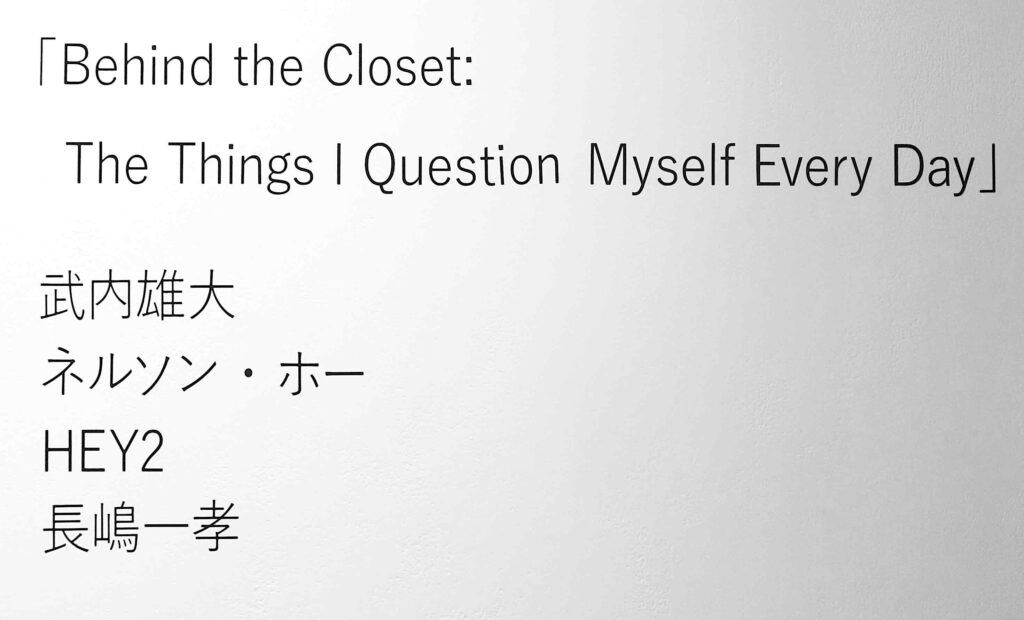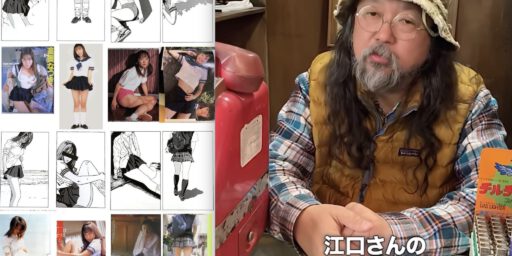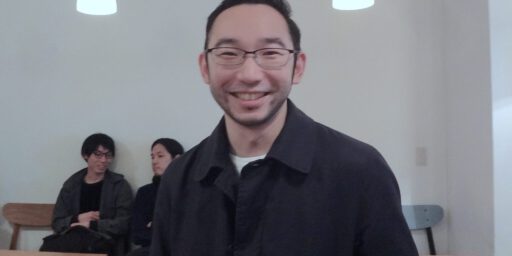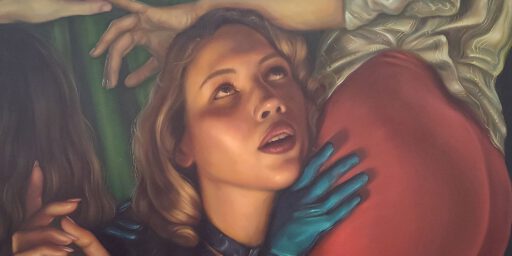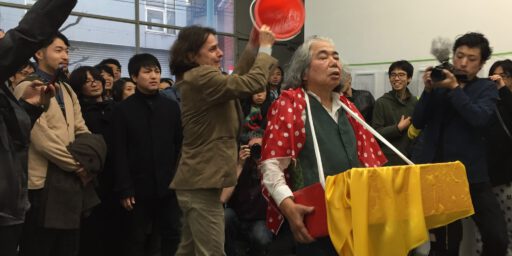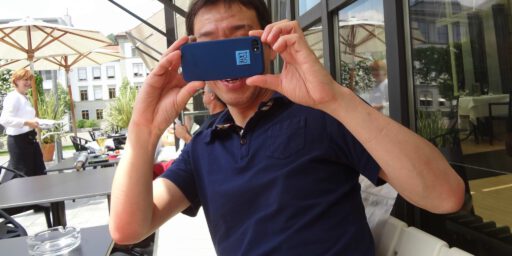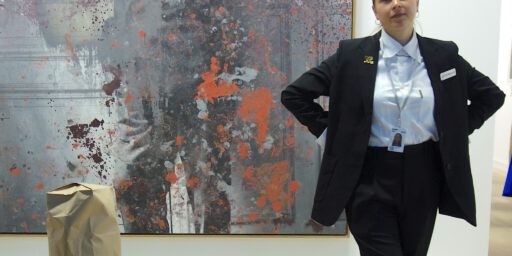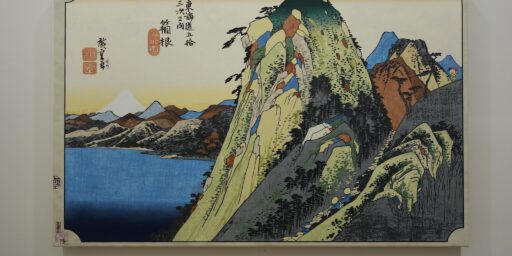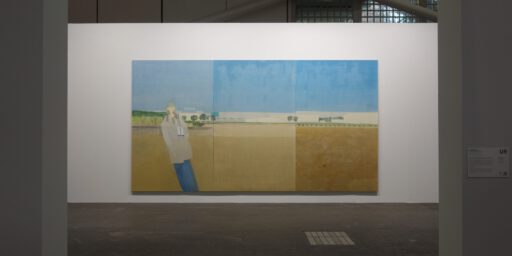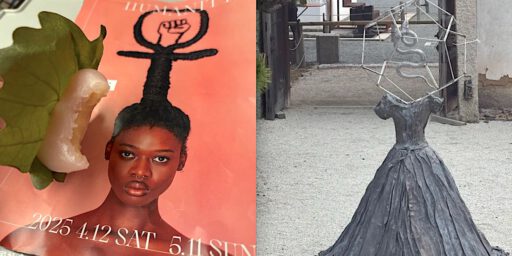日本の現代文化中心:新宿。洗練されている「Behind the Closet」展 @ 新宿眼科画廊 Shinjuku, the center of Japan’s contemporary culture. Sophisticated exhibition "Behind the Closet" @ GANKAGAROU Gallery
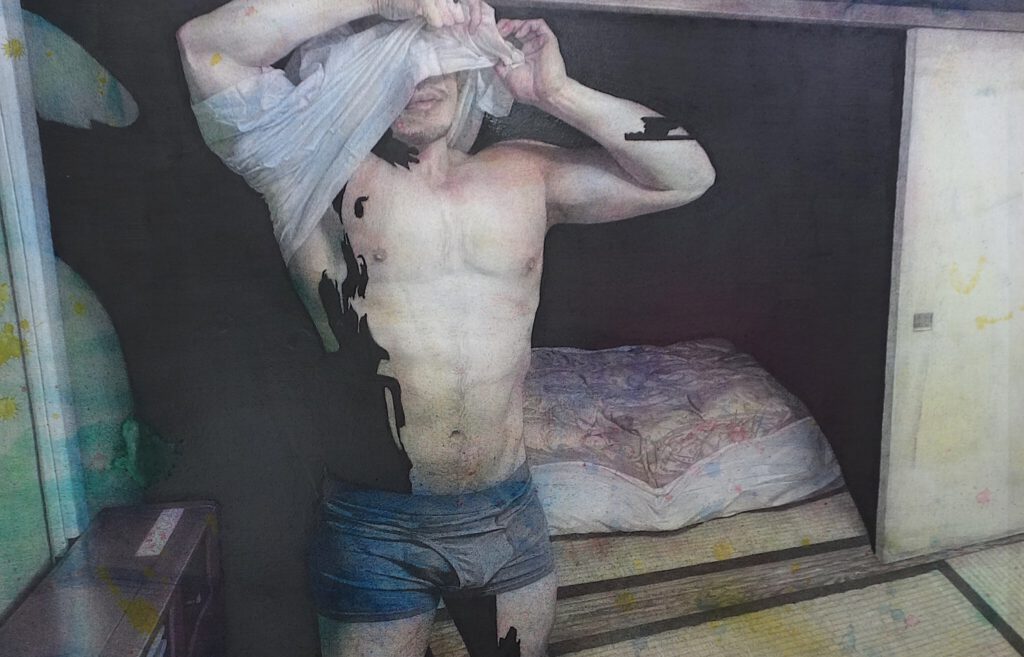
New social relational aesthetics through young Contemporary Queer Art in Japan.
An excellent, mesmerising group exhibition, curated by queer artists themselves, is currently taking place in Shinjuku: “Behind the Closet: The Things I Question Myself Every Day”.
Without a doubt, Shinjuku, a part of Tokyo, where diverse values converge, cements its central position in the vector direction of contemporary culture in Japan.
The second edition of this queer art exhibition once again brings together the four artists, who were applauded for their artistic practices and received critical acclaim in the previous group show. They are TAKEUCHI Yudai 武内 雄大 (b. 2000), NAGASHIMA Kazutaka 長嶋 一孝 (b. 1984), HEY2 (b. not public) and Malaysian-born Nelson Hor ネルソン・ホー (b. 1998).
As can be read from the statement by these four artists, access to “hidden” informations in the queer world still seems to be quite difficult. Often, escaping to the, in comparison to the country-side, “anonymous” metropolis, like Tokyo, is the only way to finally feel liberated from social constrains and living a normal (or outstanding), free life.
Fortunately, the exhibited works contain a knowledge of conceptual art practice and the virtuosity to present themselves cleverly in the contemporary art scene. The four artists have skilfully brought hidden questions and social issues, as well as eclectic, divergent perspectives from the queer world, closer to the contemplating visitor, who stands between art meditation and the responsibility of the artist’s attitude. Their graceful cathartic methods embody a very personal artistic narrative, which we all, in some way or another, can relate to.
Bravo!
Tokyo, the 9th of February 2024
Mario A 亜 真里男
「Behind the Closet: The Things I Question Myself Every Day」
HEY2、Nelson Hor ネルソン・ホー、TAKEUCHI Yudai 武内雄大、NAGASHIMA Kazutaka 長嶋一孝
Until the 14th of February 2024, 12:00 〜 20:00, Last day 〜 17:00
Shinjuku 5-18-11
https://www.gankagarou.com/show-item/202302behindthecloset/
〔ご挨拶〕
昨今、LGBTQやジェンダーの多様性など様々な性の在り方が浸透してきた中で、アートの世界でもLGBTQやジェンダーをテーマにしたアート、クィアアートが注目を集めています。
そこで、現在、東京で活躍する若手のクィアアーティスト達をピックアップし、多様な価値観が集まる街、新宿で展覧会を開催するという運びとなりました。
今回2回目となるクィアアート展では、前回好評だった4人のアーティスト達が再び集結し展示を行います。
今回も油彩、日本画、版画、立体、インスタレーション、パフォーマンスとバラエティに富んだ作品を展示いたします。
一年半ぶりの彼らの成長をご覧ください。
多様化するジェンダー×多種多様なアート×多様性の街。新宿。
この3つの多様が交差する時、あなたの中に新たな価値観が生まれるかも知れません。
皆様、是非足を運んでいただければ幸いです。
〔ステートメント〕
今回、 この場所に作品を展示する私たちは幼少期より自分たちが属するコミュニティにおいて 同性愛者という立場から時に無自覚に時に自覚させられながらクイアな存在として育ってきました。
異性愛者というマジョリティの立場にある人々と同じように社会が自らの身体やセクシュリティをどのように描いているのかについて多くの疑問を抱えています。
しかしほとんどの場合、その様式や表現は大衆の前に登場することはなく、わたしたちが 自らの身体やセクシャリティに関する説明書を手にする機会は少ないのです。
マイノリティを排除するような雰囲気を纏ったコミュニティで自らの身体、セクシャリティについて話題にすることさえ勇気が必要なのです。
隠された情報を手に入れるために私たちは常に心理的にも肉体的にも多くの痛みや苦痛と向き合いながら自己認識をしていきます。
今回の展示会で作品群を通してこれらの隠されがちな疑問や存在を表面化させ、 4人4様のクィアな視点から文化、社会、物語を考え、鑑賞者の皆様にも共有させていただきたいと思います。
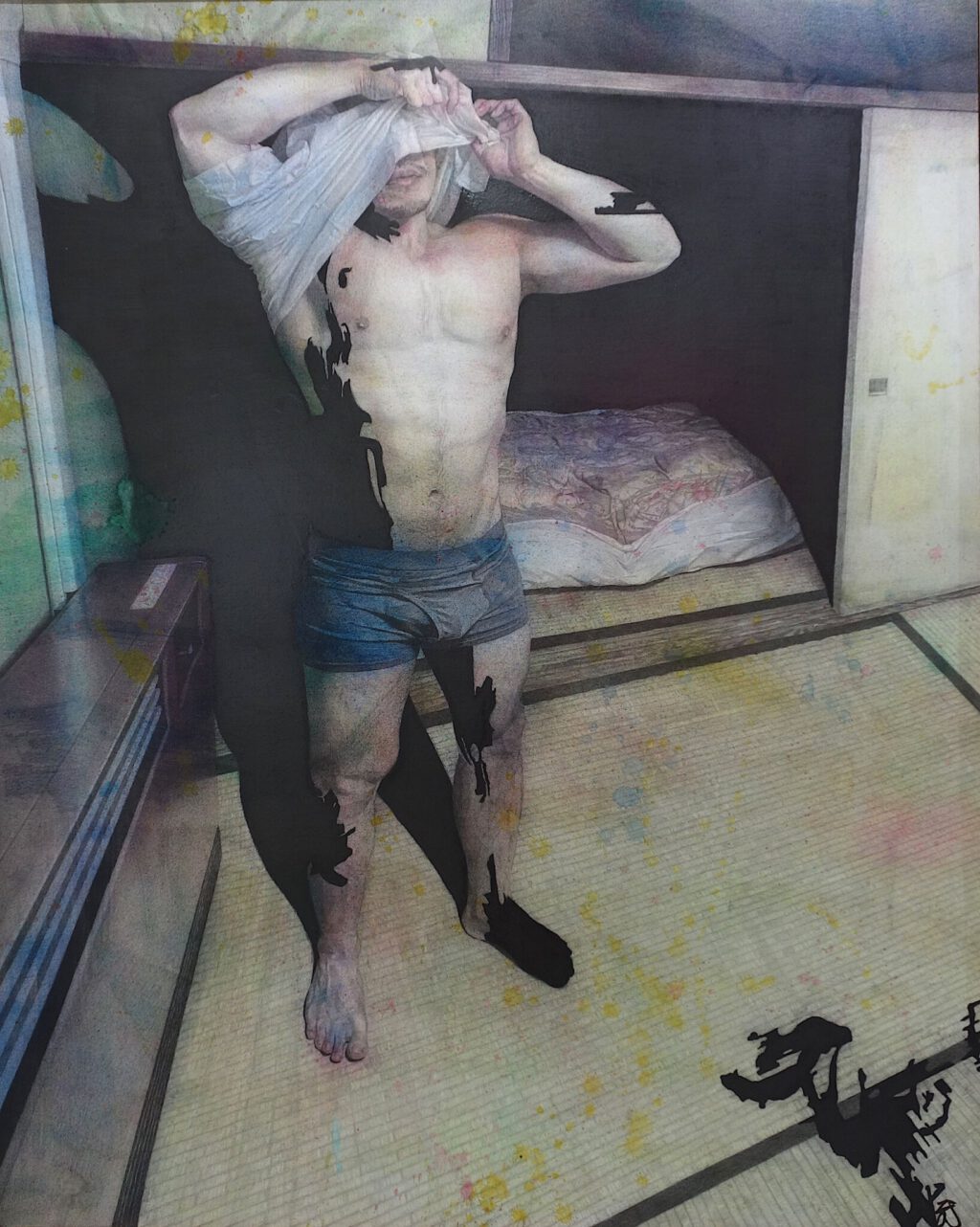
Statement about the work “nine”, written by TAKEUCHI Yudai.
「nine」
I’ve been working on the themes of ‘ageing’ and ‘how humans perceive time’ through composing the human body and black-covered surfaces in my paintings.
It was during this time that I came across ‘The Nine Stages of Decay’ (also known as Kusozu 九相図 in Japanese). The Kusozu is a series of Buddhist paintings that is said to have been painted between the Kamakura and Edo periods, and depicts a corpse placed outdoors in nine stages of decay.
The corpses depicted were often beautiful women, and it is said that the purpose of the grotesque depictions was to teach Buddhist monks about the impermanence of life and to encourage them to renounce their sexual desires and practice asceticism.
Since learning about these paintings, I have come to think that perhaps my work is also my own ‘nine stages’.
I subdivided the word ‘nine’ into ‘infinitive’ and summarised them in a single picture, furthermore, the main object has turned into my sexual desire which is a man. While sympathising with the view of impermanence that no matter how special a person you may feel about, in the end, they’d eventually decay in bones.
However, I am not drawing corpses, nor am I drawing them grotesquely, because I want to present that we are in the process of dying and decomposition from the moment of birth and the idea of repressing our sexuality and caring too much about what other think about us is rather trifling.
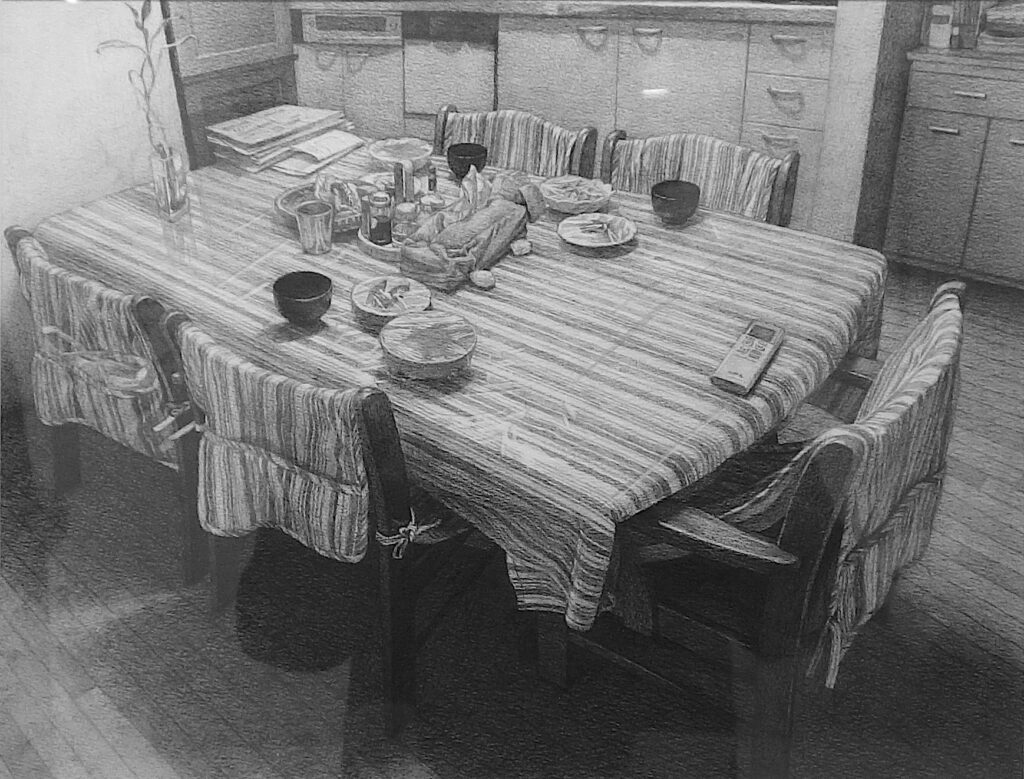
Statement about the work “chew and swallow”, written by TAKEUCHI Yudai.
「chew and swallow」
A few years ago, for various circumstances, my parents found out that I was gay.
They seemed very disappointed and my father was particularly shocked.
After arguing for a few days, we still couldn’t come to terms and it turned into an awkward, untouchable situation.
After a while, my parents started coming back home at different times due to their work and we went from eating dinner together around the table to having food wrapped and put on our seats eating separately.
My father is the one who cooks dinner every time.
I came out on the night that we were all at the dinner table, so often when we have to eat together as a family, I remember that day and feel a mixture of blame and anger towards myself.
Every day I look at the dinner prepared by my father, I wonder, what’s in his mind when he’s making them.
What does it feel like to cook for someone after telling them that having a gay son felt like in hell, or they are sick and should go to a sex trade (sex establishment 風俗) to get better?
To find out, I decided to cook a family meal, as my father always did and put it on the table. This painting is to capture that moment.
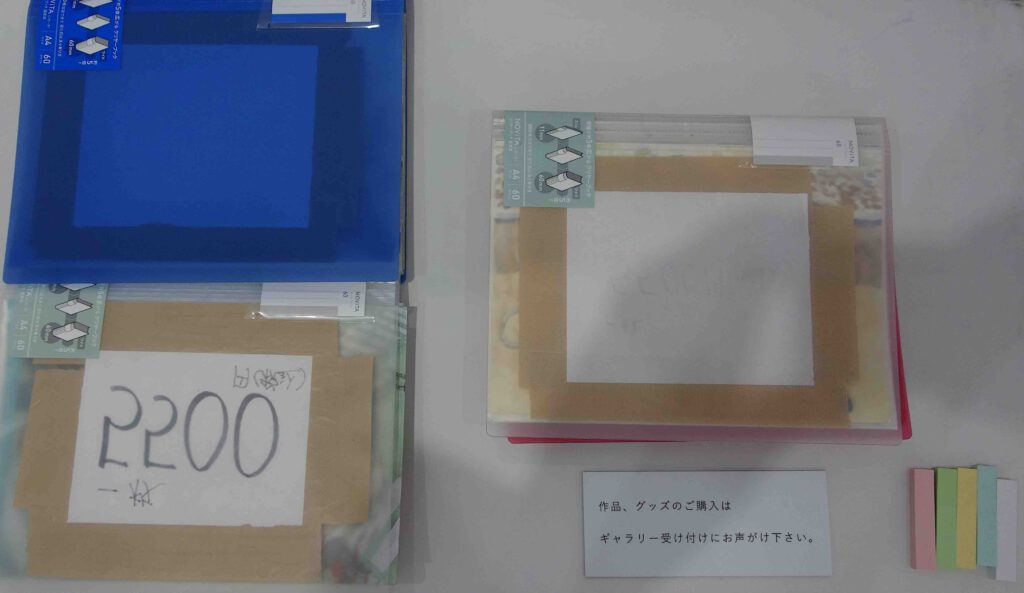

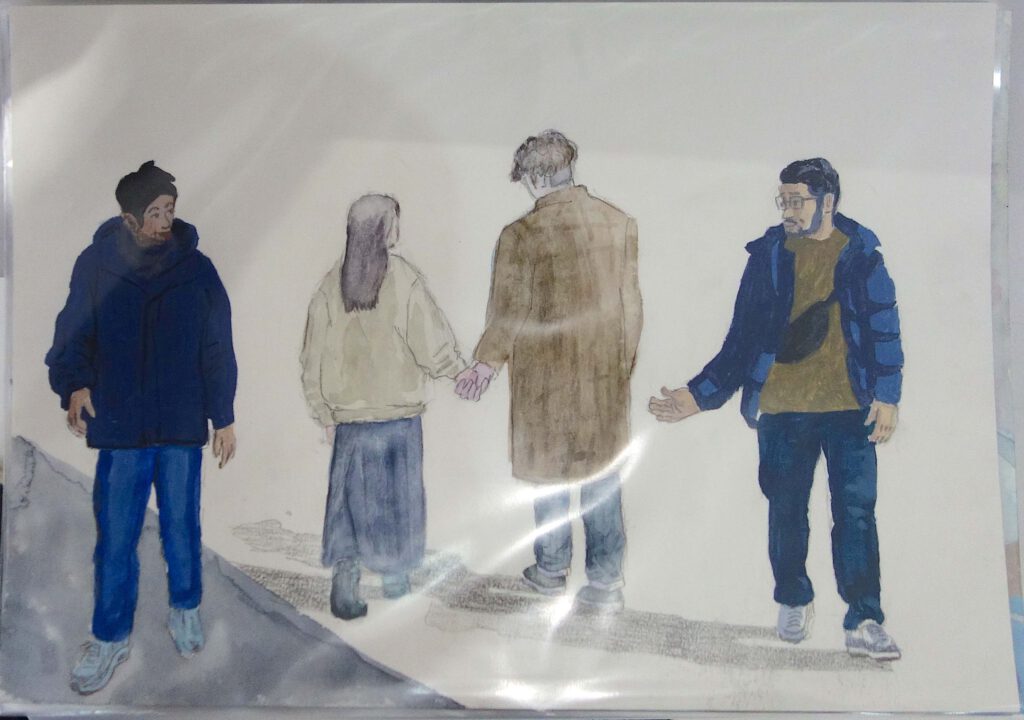




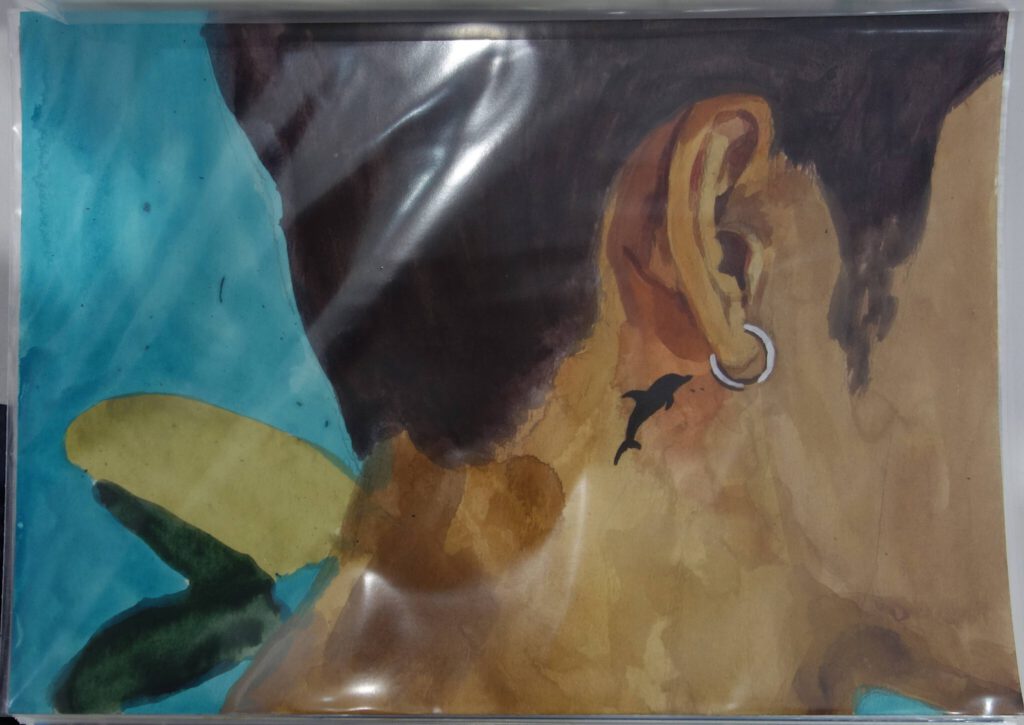
画家 武内雄大 Yudai Takeuchi ブレイク前夜 2022 #351 art アート
Artist’s website:
https://yudaiart.buyshop.jp
https://www.instagram.com/yudai_take
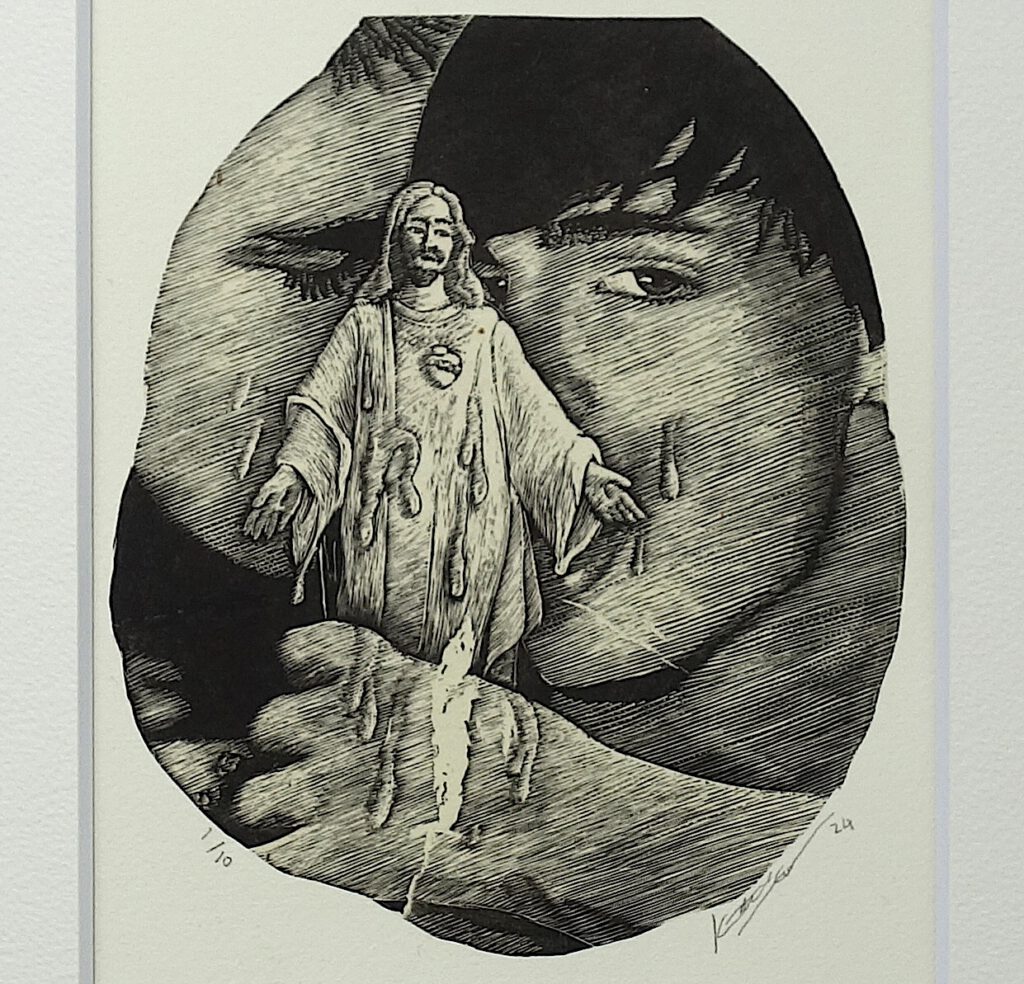

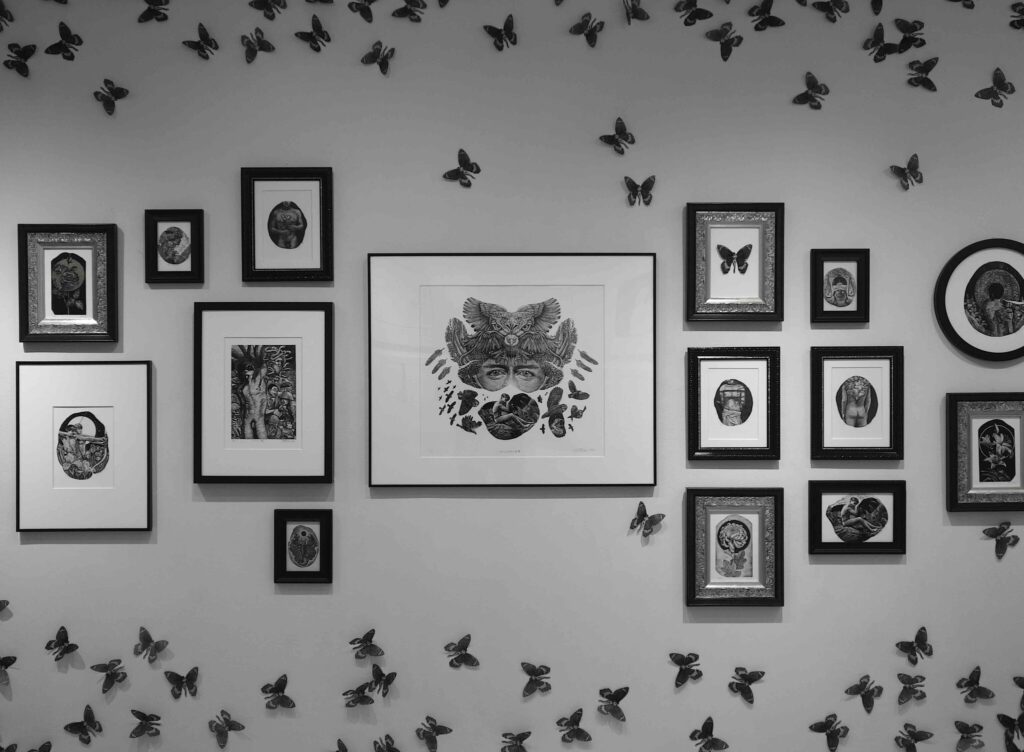

Kazutaka Nagashima 木口木版画家
Artist
日本版画協会準会員
木版画アーティスト ツゲや椿といった堅い木の木口(輪切り面)を使用した木版画を作成しています。ストーリーズでは都内で開催されている展示情報や活躍中の作家さんを紹介しています。
https://www.instagram.com/kazutaka_nagashima_/
LGBT Queer Artist🌈
https://www.instagram.com/queer_artist_tokyo/
https://nagashimaart.buyshop.jp
HEY2
ステートメント
ひとのかたちをつくるものにじぶんとおなじところをみつけ
それをよくみるとぜんぜんちがうことにづく。
そのちがうところをよくみてみるとそのなかにじぶんとおなじようなところがある。
そのおなじようにみえたものよくみるとちがうものでそしてそれはじぶんをみたときもおなじだった。
みんなになりたいとおもいながらじぶんでありたいとおもう。
めくるめくめるてぃーなおもい。
じぶんのなかにあなたがいて
あなたのなかにもじぶんがいる。
わたしはみんなでみんなはわたし。
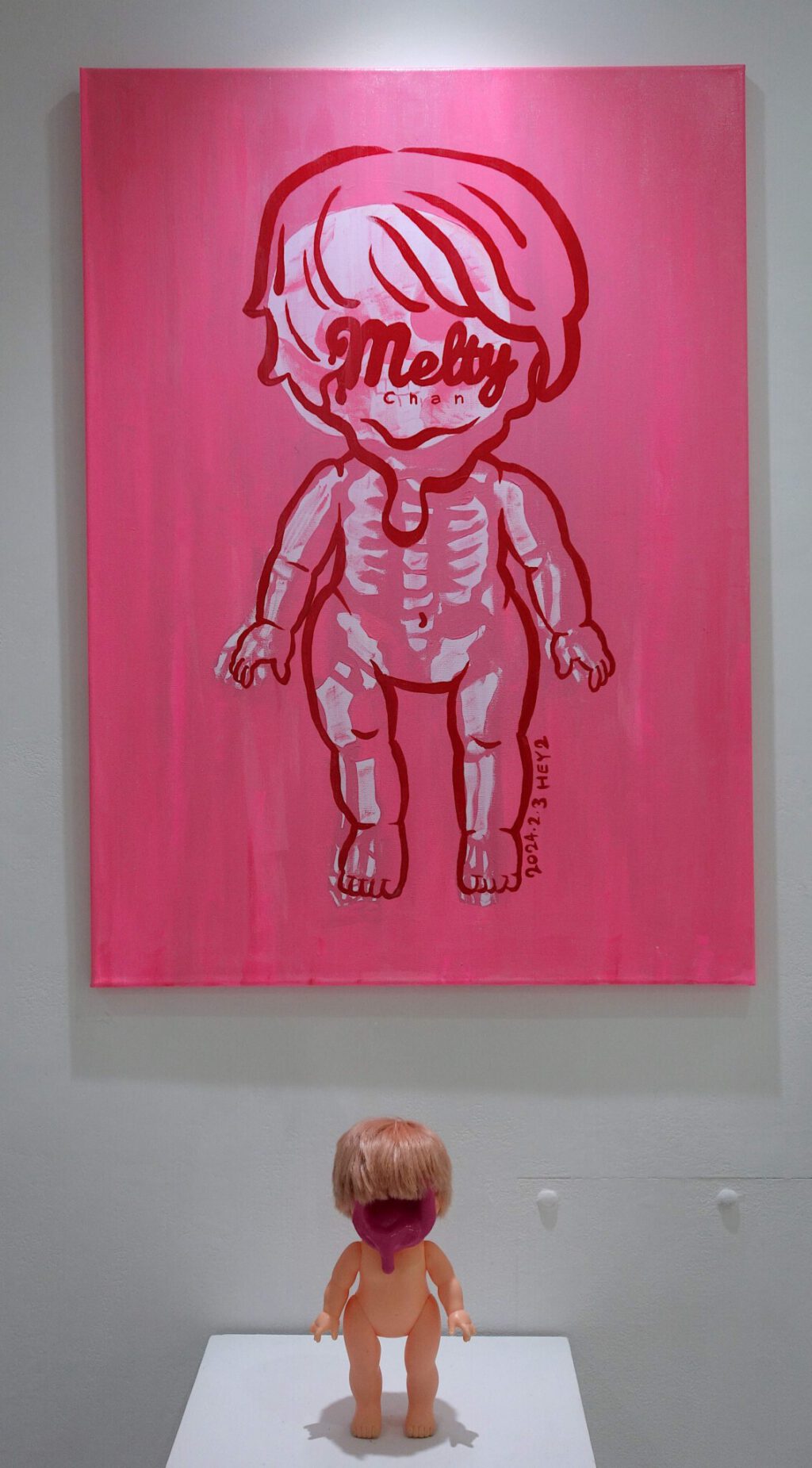
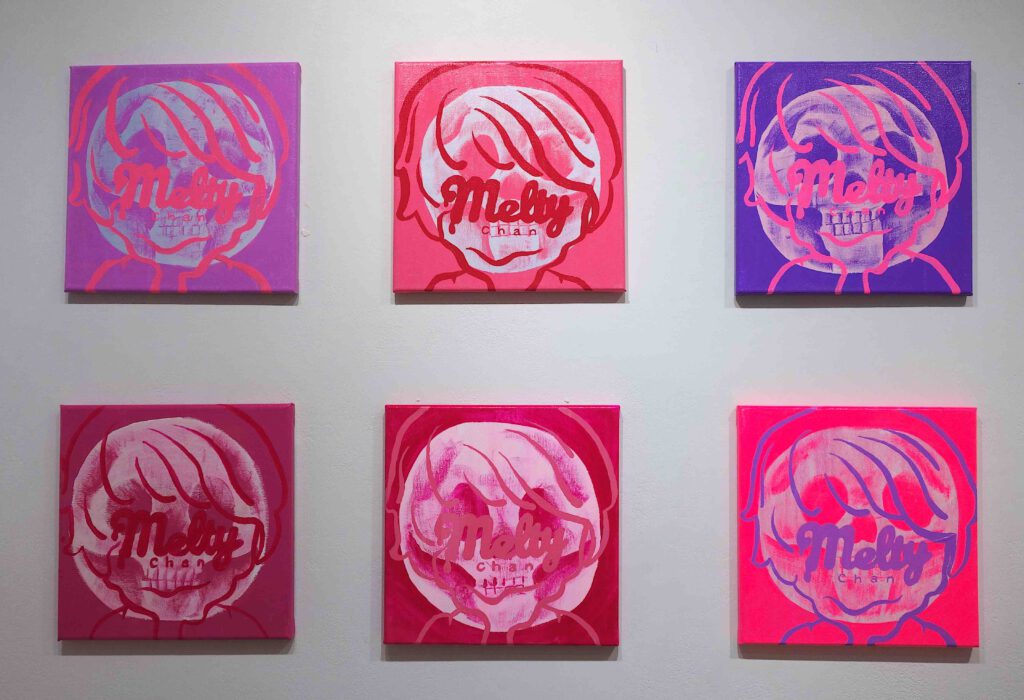
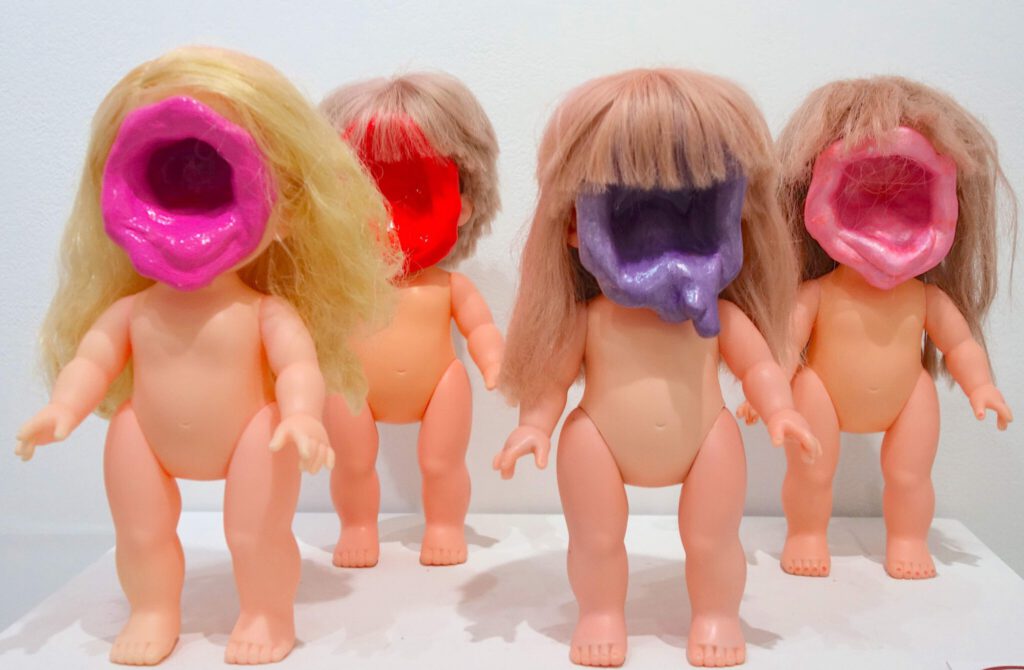
HEY2 MATERIALS
あやしくないものほどほんとはあやしいものなの
https://www.instagram.com/hey2materials/
クイアな存在として生きる自分自身やまわりの人達がどうすればこの世界のことを好きになることが出来るかな?って考えながら作品をつくりましたのでぜびみにきてね。

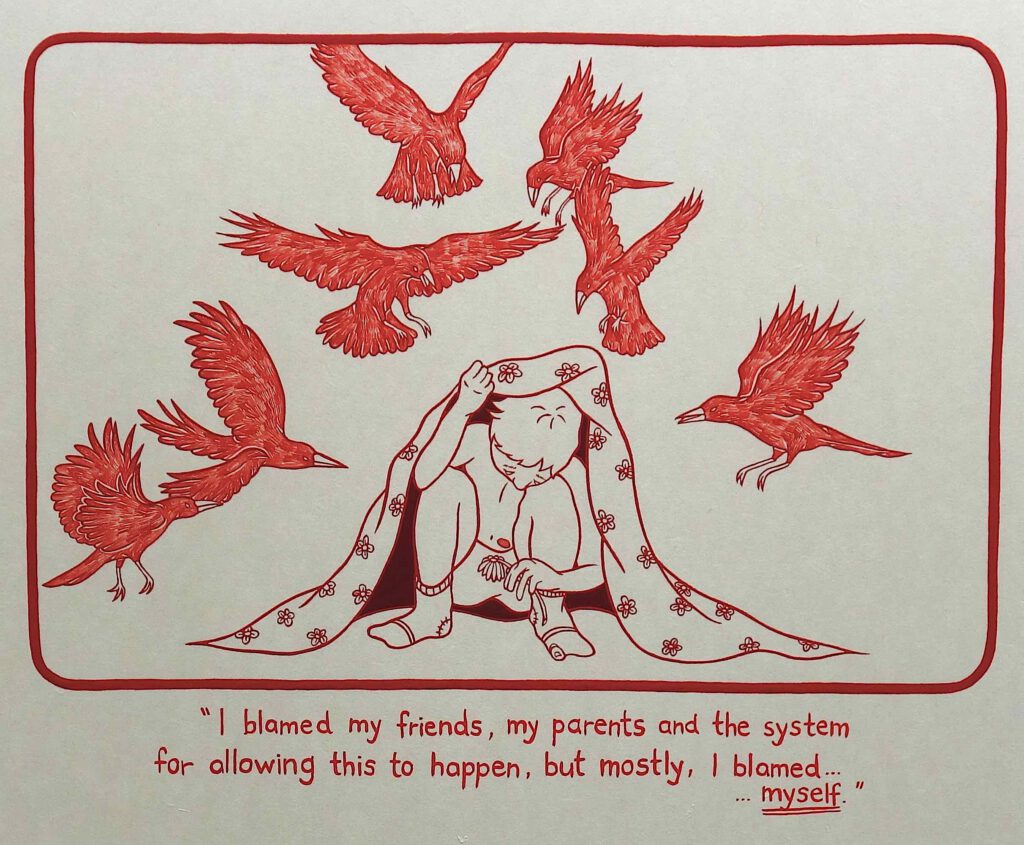
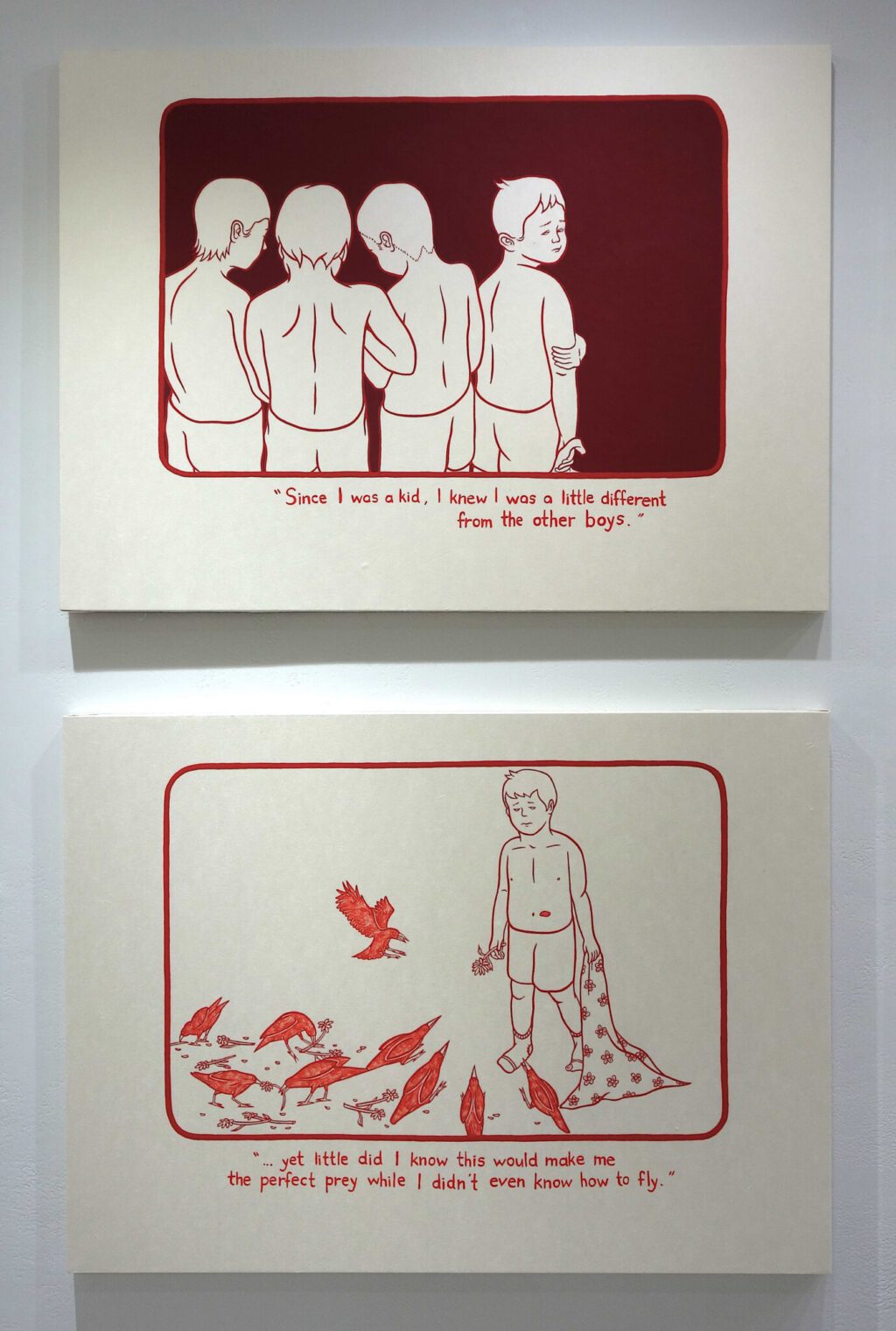

Statement, written by Nelson Her Ee Herng.
“The Birds and the Bees” is a poem I wrote about the loneliness and impact led by childhood sexual trauma and lack of sex education and understanding of sexuality.
In most coming-of-age novels or movies, when you achieve “sex”, it is the next step.
It is a moment, a prerequisite to something else, but queer folks we very rarely have modes, we never have instruction manuals, we don’t have the talk from our parents about birds and the bees.
So a lot of our way towards our desire is also a way towards self-knowledge on both a psychological level and an anatomical level.
We learn on the fly, which is not always going to be successful on the first try.
We often mourn the loss of innocence and shame the failure but for queer folks, failure becomes a necessary practice towards success, so we fail forward.
In this series, I want to honour the innocence and go back to the failure until it triumphs in the sight of its bumbling which is what being queer feels like to me.
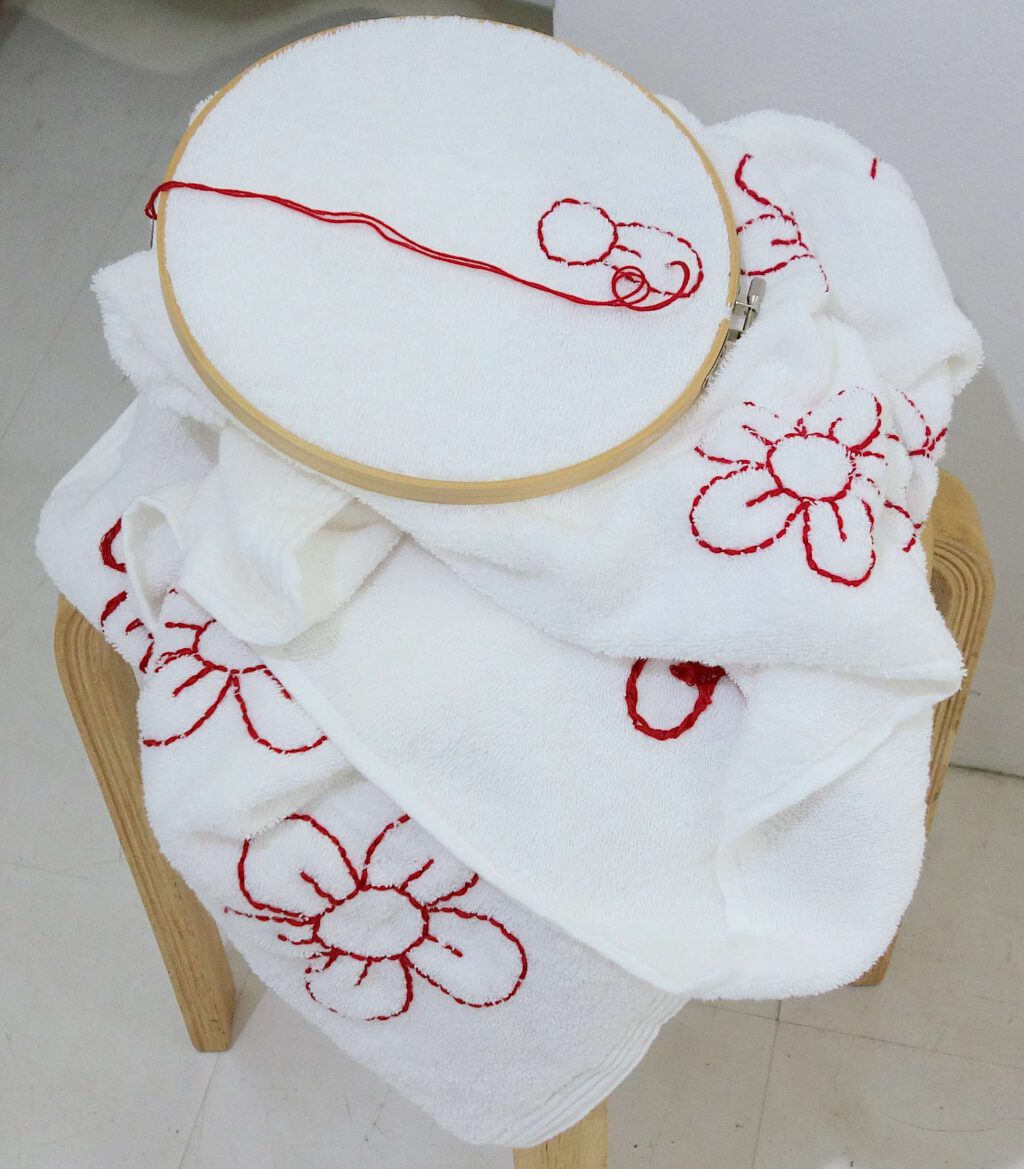
Artist’s statement, copyright and courtesy, see Nelson Hor’s website:
My Devotion to Loneliness
https://nelsonhor.com/My-Devotion-to-Loneliness
Throughout the history, especially during the Medieval Period, women were expected to embroider patterns like flowers and instruments to the mantel drapery while men were fighting in wars. These embroidery patterns emphasised the taste and elegance of the holder and were believed that embroidery enhanced domestic happiness, providing the comfort that would win a husband’s love and prove a wife’s devotion.
There were times that I’d change my appearance or personality in the hopes of getting my crush to like me or I’d often blame myself and shoulder the entire responsibility for the failure of my relationships, not until later I realised how shallow the intention was. Therefore, I decided to embroider flower patterns representing my desire for companionship, love and closeness on drapery while using it as a metaphor to show my devotion to solitary.
歴史上、特に中世の時代には、男性が戦争で戦っている間、女性は炉棚の 麻布に花や楽器などの模様を刺繍することが義務づけられていました。これらの刺繍模様は、持つ人の趣味や優雅さを強調し、刺繍が家庭の幸福を高め、夫の愛を獲得し、妻の献身を証明すると信じられていたのです。
私は、恋人に好かれようと外見や性格を変えたり、恋愛がうまくいかないと自分を責めて全責任を負うことがありましたが、後になってその意図がいかに浅はかであったかに気づきました。そこで、仲間や愛、親密さを求める気持ちや孤独への献身を表現するメタファーとして、花をひざ掛けの上に刺繍することにしました。
Artist’s website:
https://nelsonhor.com
Instagram:
ネルソン🌻
Artist
📷 @everyday_strangers
Tokyo-based Malaysian artist
「 Not seeing is a flower. 」
https://www.instagram.com/nelson_hor/
